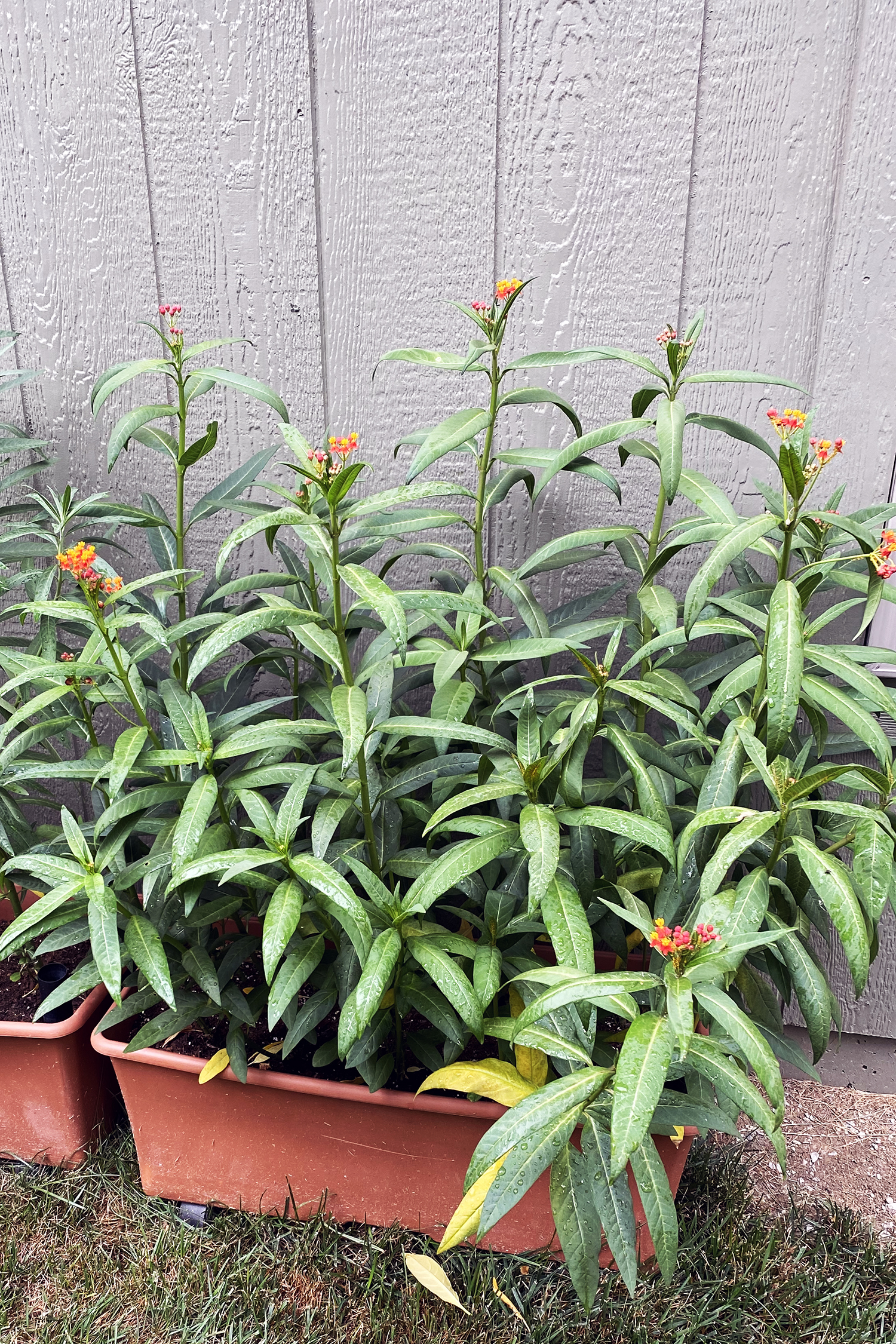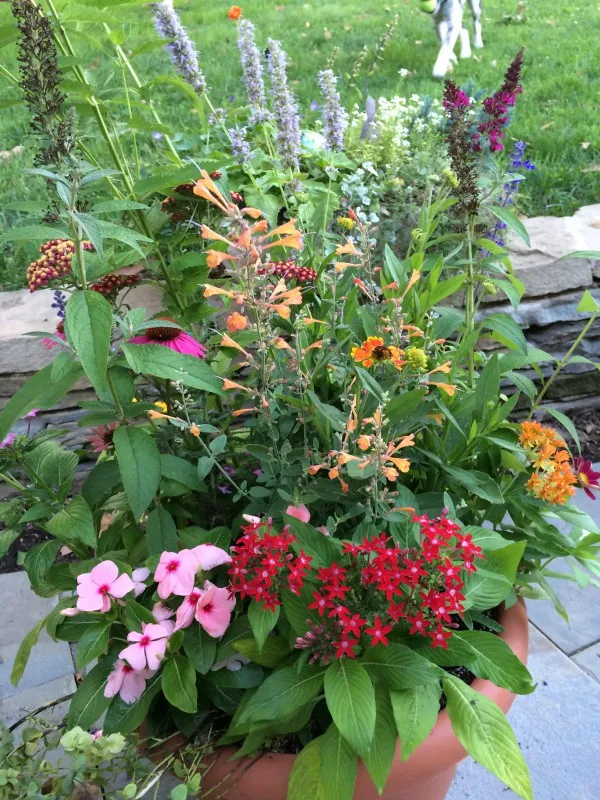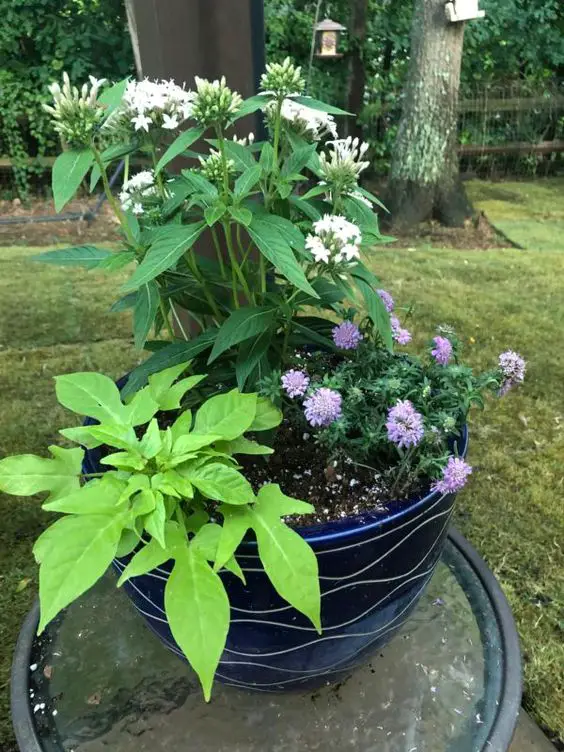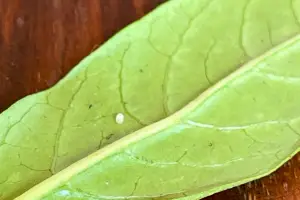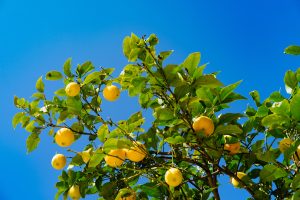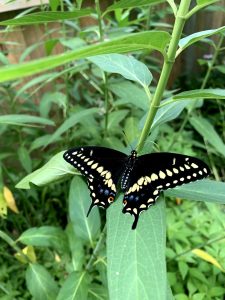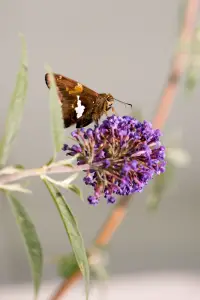Container gardens are a great alternative to planted gardens for a variety of reasons. Whether you don’t have the yard space or just want the easier maintenance, you can easily create a container butterfly garden in planters.

While it may not seem like it initially, plants that make up the best butterfly gardens can also thrive as potted plants. From host plants to nectar plants, almost anything you plant in a normal garden can be potted. This is a great option if you only have a balcony to work with or if you don’t want to spend your summer pulling weeds.
With the right plants, you can create a beautiful container garden that attracts pollinators like butterflies, bees and other pollinating insects all season long.
One of our favorite things about butterfly gardening is raising butterflies inside. Learn how to raise different butterflies with these guides:
How to Raise Monarch Butterflies
How to Raise Swallowtail Butterflies
How to Raise Spicebush Swallowtails
1. Use planters of varying heights and sizes.
Before you start planting, collect planters and pots of varying heights and sizes. You can make these as matchy or eccentric as you like! Different shapes and sizes add visual interest, but of course, the many different flowers and plants you use will also add to the design.
Make sure your planters have a drainage hole so you don’t drown your plants when watering or when there’s a rain storm.
Here are some fun container garden planters you could use:









2. Place your container butterfly garden in the sun.
Choosing the right location for your butterfly garden makes all the difference. Most butterfly garden plants prefer full sun and will grow best in those conditions. Making sure your container garden gets at least 6 hours of full sun each day will produce the best results. Having the proper lighting conditions will help your plants grow fuller and brighter and give you the stunning garden you’re hoping to grow!
3. Plant host plants.
One of the most important parts of a butterfly garden is the host plants. These are the plants butterflies lay their eggs on. Host plants ensure butterflies hang around and come back to lay their eggs, and after a few weeks produce new butterflies as the caterpillars grow and pupate.
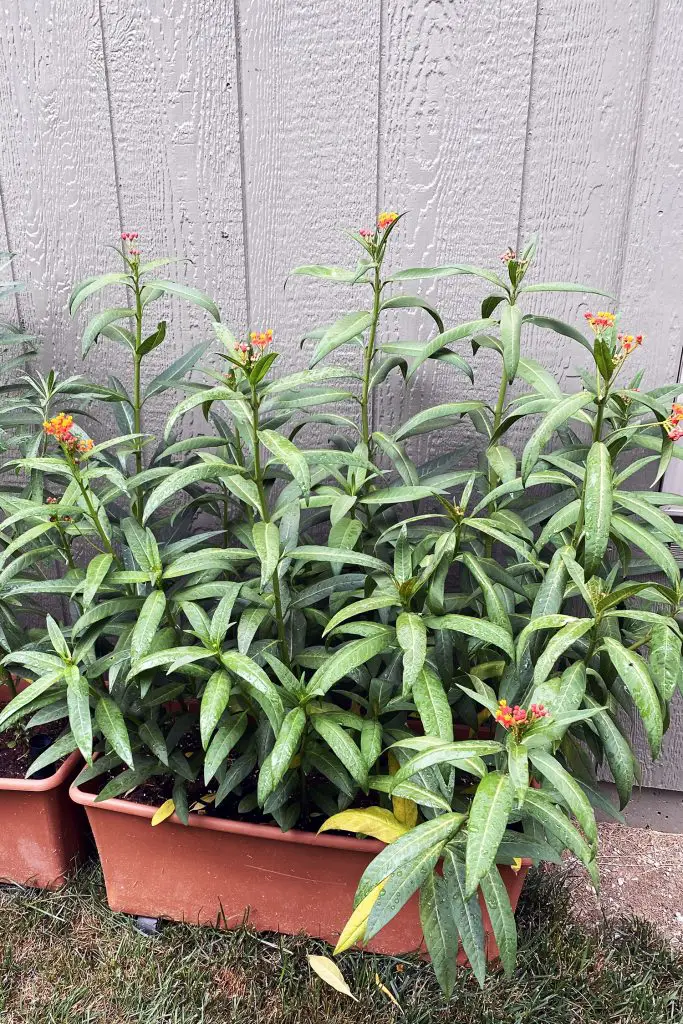
To attract the most butterflies, research the butterflies in your area and plant host plants that attract them. Milkweed is the only host plant that monarchs lay eggs on, but there are several types depending on where you live. Since you’re planting them in containers, it doesn’t matter which kind you use. Black swallowtails have several host plants like parsley, dill, fennel and other plants in the carrot family. It can be fun to plant a variety and see which ones your butterflies prefer!
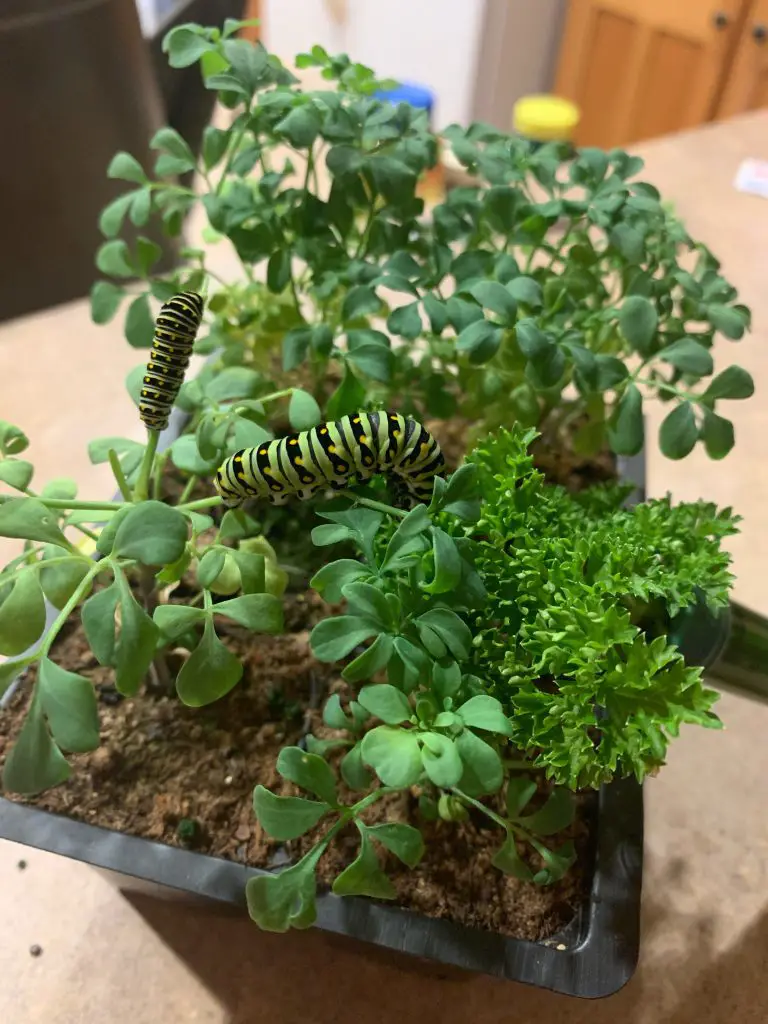
Add more variety and height to your garden by planting lemon trees for giant swallowtails and pawpaw trees for zebra swallowtails. I’ve successfully kept a small pawpaw tree alive in a container the last 3 years. It’s probably time to plant that one in the ground, but small trees aren’t out of the question for container gardens!
Remember, caterpillars eat A LOT. So the more host plants you can add to your container garden, the better.
4. Plant nectar plants
Along with host plants, your butterfly garden also needs nectar plants. These will attract butterflies and other pollinators to your garden. Native plants tend to be the best plants for pollinators. Some common native plants in the midwest include coneflowers, zinnias, butterfly weed, bee balm, wild blue indigo, Joe Pye weed, new england astars, and so many more.
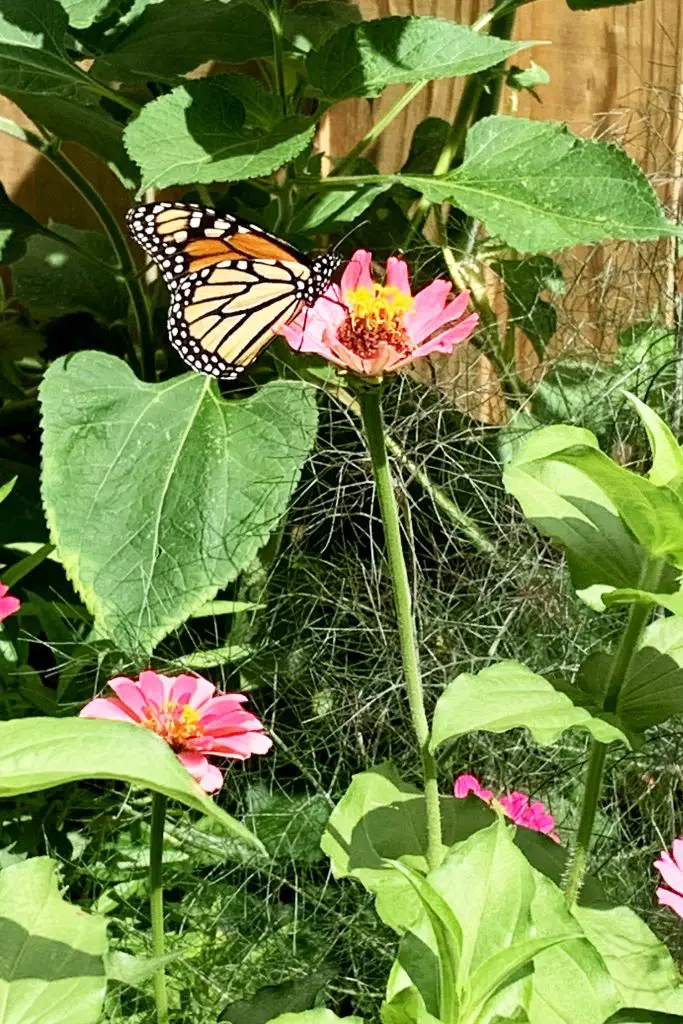
Google the native plants in your area for a more complete list.
Also feel free to mix in annuals even if they’re not native. The more colorful the better – this will attract more butterflies to your container garden.
One thing about a container garden is that most of your plants will act more like annuals even if they’re native to your area. Trees and larger plants may survive inside over the winter, but most of your plants will die at the end of the season. But don’t worry – you can harvest the seeds they put out in the fall and use those to start new plants the next year!
5. Plant bright colored plants
There are specific types of nectar plants that attract butterflies more than others. Butterflies are particularly attracted to red, yellow, orange, pink and purple blooms with short flower tubes.
6. Don’t use mixed seed, plant large groups of the same plant.
Since butterflies are attracted to certain colors, it’s recommended that you plant large clusters of the same plant so they can be found by pollinators more easily. You can still combine more than one plant in each planter, just be sure each plant has its own space. Avoid alternating plants or using mixed wildflower seeds. Your pollinators will appreciate being able to find large bunches of each plant you add to your container garden.
7. Make sure not to use any pesticides near your container butterfly garden.
Spraying your yard for mosquitos or other insects will inevitably also rid your space of butterflies, eggs and larva. One year we sprayed our yard and asked them to avoid the butterfly area, but it must have drifted over. That summer we got several eggs on our milkweed, but the caterpillars didn’t survive after hatching. Unfortunately, the chemicals that take care of annoying pests also get rid of beneficial ones. It’s best to keep any chemicals away from your butterfly and pollinator gardens.
Follow these tips and you’re sure to have a container garden that you and your local pollinators will enjoy all season long!


